Running is an extremely popular form of exercise that has countless physical and mental benefits. However, without proper footwear, runners are susceptible to injuries that can sideline them. Having the right running shoes makes all the difference in enjoying the running experience and avoiding setbacks. This complete guide will cover everything you need to know about choosing running shoes to meet your specific needs and preferences.
Why Good Running Shoes Matter
Running puts a lot of repetitive stress on your feet, ankles, knees and hips. Shoes are your only layer of protection. Ill-fitted or worn out shoes are the number one cause of common injuries like shin splints, plantar fasciitis, knee pain, soreness and blisters. Investing in a pair of high quality running shoes tailored to your running style, foot shape and usage patterns can make or break your performance and comfort.
Key Features of Running Shoes
So what should you look for when shopping for running shoes? Here are the key components:
-
Outsole – This is the bottom layer that comes in contact with the ground. Trail shoes will have deep lug patterns for gripping uneven surfaces, while road shoes have smoother, flatter soles. The material and thickness impacts durability and flexibility.
-
Midsole – This is the cushioning layer that absorbs impact. Materials like EVA foam, polyurethane and gels offer responsive cushioning. Look for shoes with ample midsole thickness for your running needs.
-
Insole – The top layer that your foot rests on. Should provide ample arch support and cushioning. Many shoes have removable insoles you can swap for custom orthotics.
-
Uppers – Lightweight, breathable mesh uppers are standard these days. Some shoes incorporate synthetic overlays for structure and support. Uppers should secure your foot without uncomfortable pressure points.
-
Toe Box – Having adequate room to splay and flex your toes helps comfort and stability. Narrow toe boxes can restrict toe movement and cause nail bruising and blisters.
-
Heel Counter – This firm cup cradles your heel to keep it aligned and minimize wobbling. Deep or dual density heel counters improve rearfoot stability.
-
Weight – In general, lighter shoes are faster while heavier models offer more cushioning. Racing flats can weigh under 6oz while trainers pack more stability features. Go with the lightest shoe that still meets your needs.
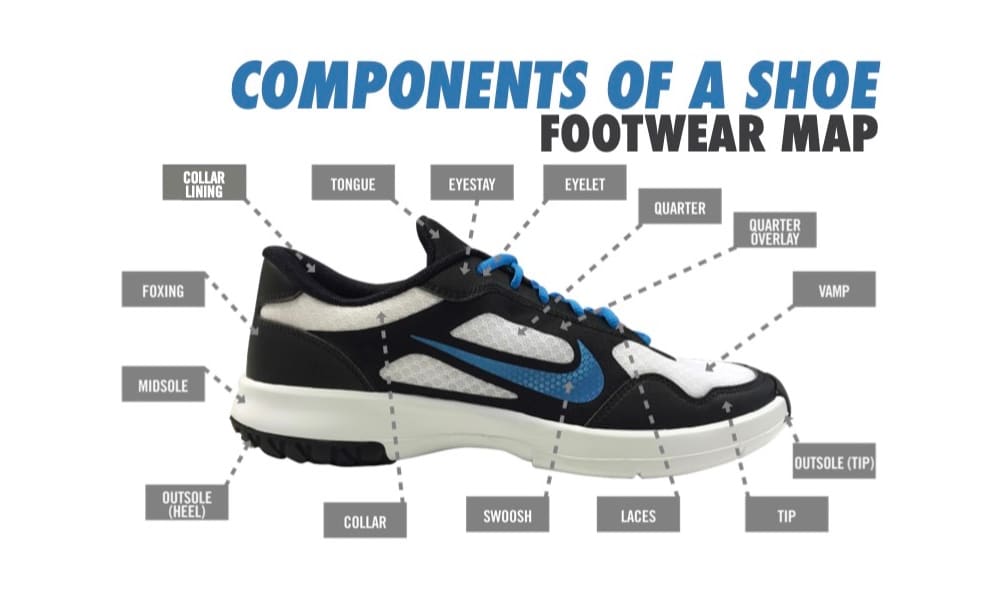
Types of Running Shoes
With those key components in mind, running shoes fall into main categories based on usage:
Road Running Shoes
Road runners need maximum cushioning to absorb hard paved surfaces. Flexible uppers and smooth treads also accommodate roads. Models like the Nike ZoomX Vaporfly NEXT% 2, Saucony Ride 15 and Hoka Clifton 8 provide optimal road running performance.
Trail Running Shoes
Trails require much more grip and stability from the outsoles along with protective upper materials. Beefed up toe bumpers, ankle support and reinforced midsoles handle unpredictable terrain. Top picks include the Salomon Sense Ride 4, Brooks Cascadia 16 and La Sportiva Jackal 2.0.
Racing Shoes
Serious runners and elites use ultralight shoes for marathons and track workouts. Very responsive cushioning returns energy while you push the pace. Examples include the Nike ZoomX Dragonfly, New Balance FuelCell RC Elite 2 and Asics Metaspeed Sky.
Training Shoes
Most runners need a durable daily trainer that can handle diverse running and gym sessions. These provide comfortable midsole cushioning and medial/arch support for longer mileage. The Brooks Ghost 15, Mizuno Wave Rider 26 and Under Armour HOVR Machina 3 deliver reliable stability and shock absorption every workout.
Motion Control Shoes
Runners who overpronate significantly need motion control shoes to realign their form. These feature medial posts, dual-density midsoles and straight last shape to curb excess foot roll on heel strike. Try models like the Asics Gel Kayano 29, Brooks Addiction 15 or New Balance Fresh Foam 1365v2.
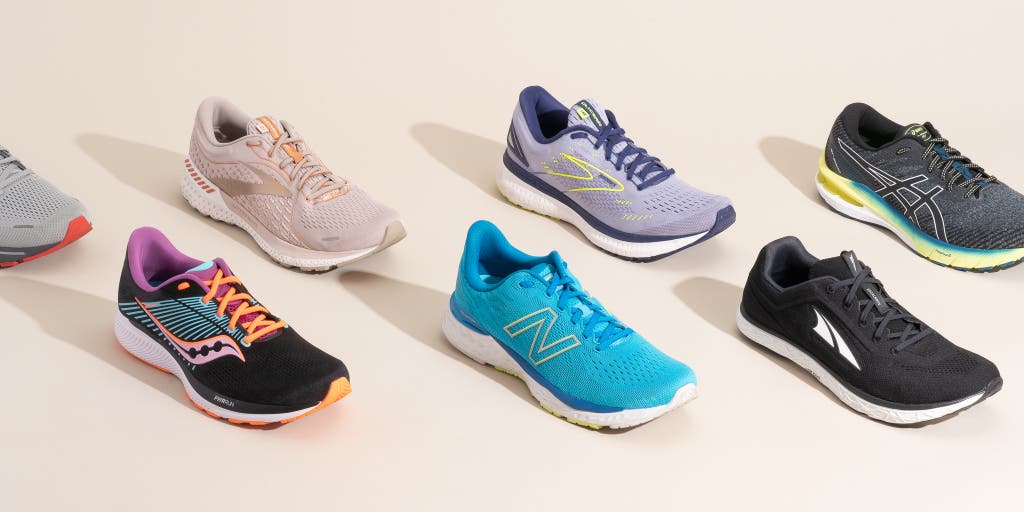
Now that you know the different categories, consider where you primarily run, your training goals, gait tendencies, foot shape, and any lingering pain points to determine the ideal purpose-specific shoe. Of course, personal fit and feel are also vital…
How to Find the Best Fitting Running Shoes
Finding shoes that check all the boxes for your needs is only part of the equation. The comfort and security of the fit can make or break performance. Here are some tips for zeroing in on that “just right” pair:
Be Professionally Fitted
Visiting a specialty running store for a gait analysis and fitting by an expert is the gold standard. They watch you walk and run then bring selection of appropriate shoes to try on. This takes the guesswork out of choosing the right category, models, size and width. Many stores allow test runs outside. Take advantage of fittings at local run shops like Runners Need when buying new shoes.
Know Your Specs
Before trying on shoes, evaluate your arch type, foot width, running mechanics and any problem areas prone to pain or injury. This informs the models the fitter brings out. Communicate any fit issues with past shoes. Measuring your feet after a workout when slightly swollen provides your true active size.
Judge Fit In-Store
Bring along current or last season’s shoes that felt comfortable for comparison. Try on models in your size, walking and jogging around the store. There should be ample room for toes (half inch from end) without slipping, and a secure midfoot wrap without pinching. Check there are no pressure points or rubbing.
Order Multiple Sizes
Since sizing varies across brands, don’t be afraid to request a half size up or down if needed. When buying online, you can order 2 sizes to compare at home. Most retailers allow free returns within a trial window. Wear test shoes on treadmills or local routes. Send back any that feel too tight or loose for a hassle-free swap.
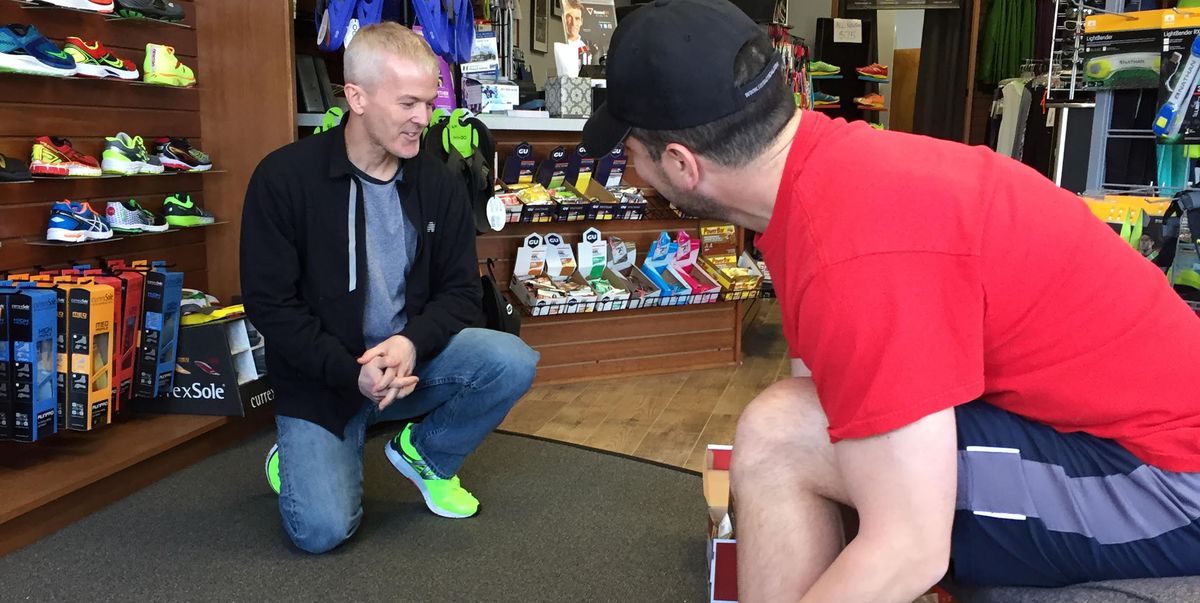
Thoroughly test driving shoes will reveal the absolute best fit for your foot biomechanics. Now let’s review pro tips for maximizing performance and longevity…
Expert Tips to Make Your Running Shoes Last
Running shoes should be replaced every 300-500 miles on average depending on your body weight and running surfaces. Heavier runners or those pounding pavement will compress midsoles quicker. But if cared for properly, shoes can exceed their mileage limits and save you money. Follow these pro runner tips:
Rotate Multiple Pairs
Expanding your rotation and switching up shoes from run to run reduces the pounding on each pair. Letting compressed midsoles fully recover extends their bounce. Have designated shoes for speedwork, long runs and recovery days.
Wash Regularly
Dirt, sweat and moisture damage shoes over time. Remove insoles and laces to machine wash upper mesh gently with mild detergent every couple weeks. Air dry fully. Disinfectant sprays help combat odor between washes.
Replace Insoles
Insoles compact over miles, losing their cushioning. Swapping in new insoles every 4-6 months restores comfort and support. Treat yourself to custom orthotics for tailored alignment.
Monitor Wear
Inspect soles and tread pattern regularly for excessive wear. Outsoles should still have ample grip and thickness. Also check for midsole creasing, collar/eyelets tearing or exposed foam. Time to retire shoes showing serious breakdown.
Shop Clearance Deals
Plan ahead and stock up on replacement shoes when you find past models on sale. Keep an eye out for deals on running specialty sites like Runners Need to save on your favorites. Break in new pairs as old ones near their limits.
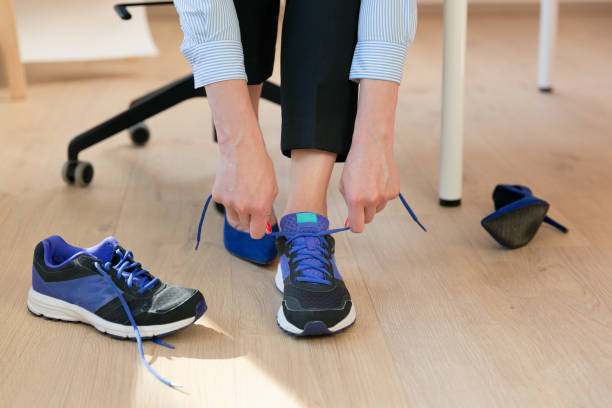
Using these care tactics will maintain the bounce, support and security of running shoes for the long haul. Time to hit the road and rack up more miles!
Top Running Shoe Brands
With so many shoe brands and models on the market, it can be tricky to narrow down your options. While personal fit and comfort should drive your decision, assessing the distinguishing features and technologies of top brands is helpful background. Here’s a rundown of leading running shoe manufacturers:
Nike
The athletic giant has an army of dedicated fans who swear by their relentless innovation. Nike exploded running shoe tech with game changers like the Nike Air system and ZoomX foam. Models like the Pegasus, Zoom Fly and Vaporfly push limits of speed and efficiency. Their wide range accommodates all runners.
Brooks
Brooks focuses intently on foot biomechanics and injury prevention. Their shoes stress cushioning and stability from silky BioMoGo DNA midsoles and GuideRails support. The Adrenaline GTS, Ghost and Launch series are trusted daily trainers for road and trails.
Saucony
Saucony nails the balance of cushioning and responsiveness for smoother transitions using FORMFIT contours and PWRRUN foam. The Ride and Kinvara are durable neutral offerings while the Guide gives stability. Their approach accommodates variety of gaits and running styles.
Asics
Asics leans into support and guidance with features like Gel Cushioning, Dynamic DuoMax, and I.G.S structure. The ever-popular Gel Nimbus and Gel Kayano series offer plush stability while the Metaspeed Sky and Magic Speed are record-breaking carbon-plated racers.
New Balance
New Balance has mastered supportive fit and premium feel across their ranges. Their Fresh Foam midsole technology provides a cushy feel many runners crave. The 890v8 and Rebel v3 are popular neutral options, while the 1500v6 racing flat is a featherlight speedster.
Hoka One One
Hoka basically invented the super-sized maximalist shoe trend. Hoka’s extra thick foam midsoles absorb shock extremely well for recovery days and ultramarathons. Models like the Clifton, Bondi and Rincon all deliver that smooth Hoka “magic carpet ride.”
On Running
Swiss brand On makes a lightweight trainer with a unique “CloudTec” sole pods that deliver a smooth, responsive ride. Their Cloud line comes in vibrant colorways and limited editions that make you want to flaunt them everywhere.
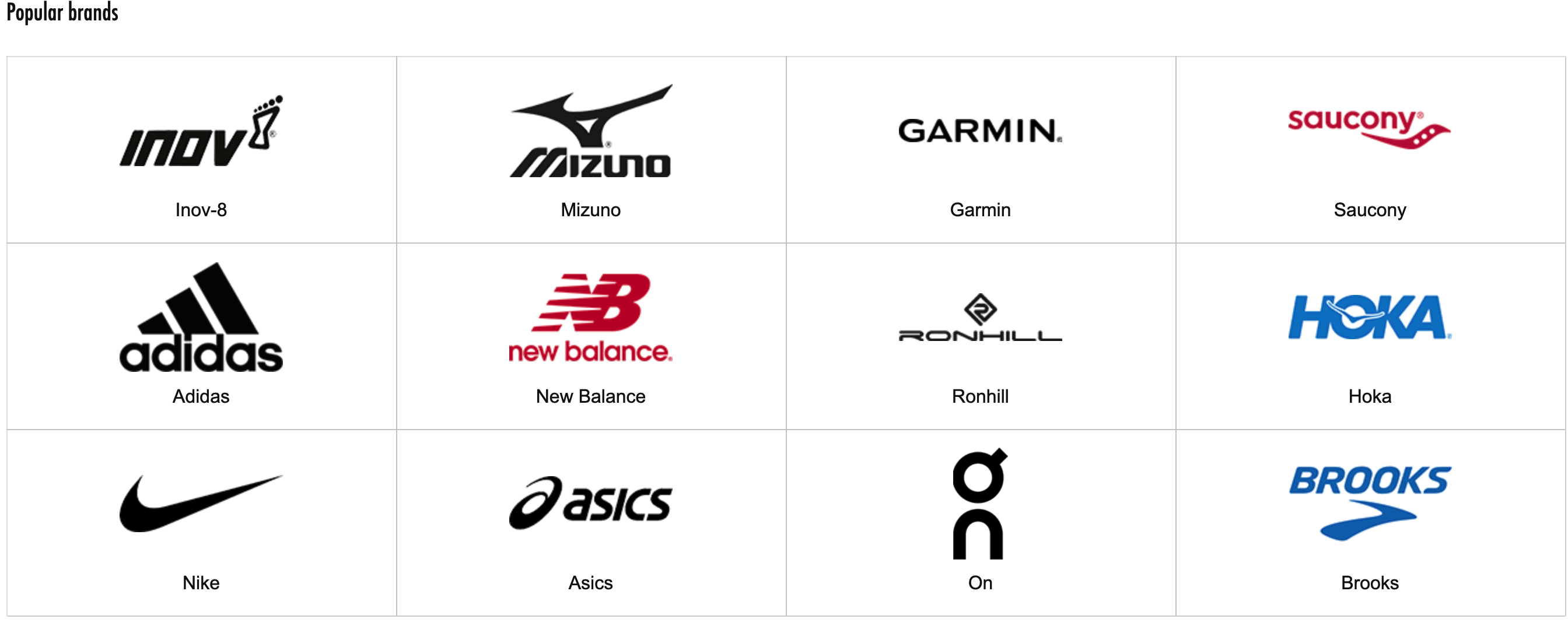
While big brands lead the market, smaller niche companies also offer compelling options worth trying. Visit specialty stores and ask fellow runners what they swear by when exploring less mainstream brands. With so many selections today, there’s something for every foot.
Must-Have Running Shoe Styles For Common Needs
Now we’ll suggest can’t-miss running shoe styles that solve many everyday needs:
Best Everyday Neutral Trainer
The Brooks Ghost 14 ($130) remains one of the most versatile daily trainers that quietly gets the job done for all runners seeking a smooth, stable ride. Over 13 generations, this neutral stalwart continues improving its seamless heel-to-toe transition and cloud-like feel.
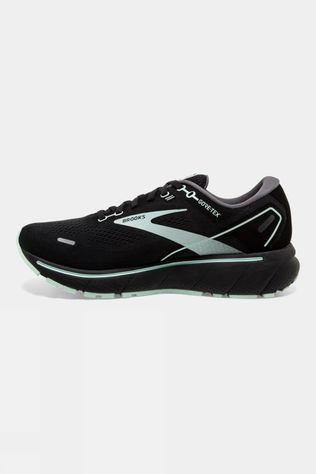
Best Long Run Shoe
Soak up big mileage in plush comfort with the Hoka Clifton 8 ($140). Maximum cushioning and energetic rebound make them a no-brainer for half or full marathon training. Improved breathability keeps your feet cool when tackling longer distances.
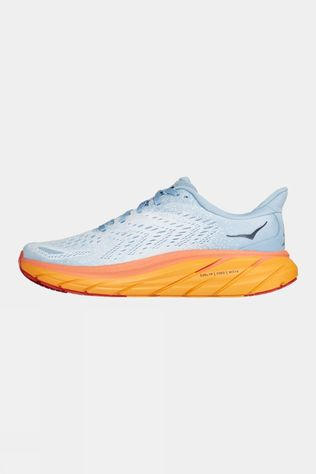
Fastest Racing Flat
Slice seconds off your PR in the Puma Takumi Road Speed ($200). This limited edition racer features a propulsive carbon fiber plate and super foamy FUZION midsole to give track and marathon elites a lightweight, snappy ride.
Most Durable Trail Shoe
Conquer rocky paths in the rugged Salomon X Ultra 4 ($160). Aggressive lugs, a reinforced toe cap and Opti-Grip outsole withstand whatever the trails dish out. They provide great grip and stability over long miles.
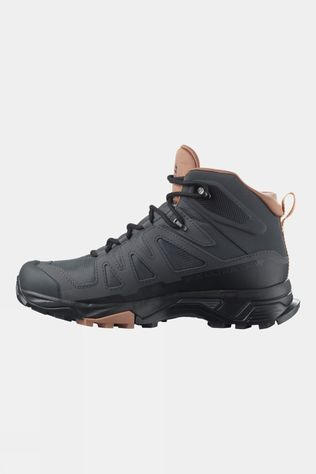
Best Stability Trainer
Overpronators, get supported for less with the Asics GT-2000 10 ($120). A 10mm heel drop, DuoMax midsole and dynamic Guidance Trusstic System right excess inward rolling. Improved forefoot cushioning ups comfort for long miles.

Most Responsive Carbon Plated Racer
Designed to set records, the Nike ZoomX Vaporfly NEXT% 2 ($250) features a full-length carbon plate for explosive energy return. ZoomX foam and air pods deliver that unmistakable Nike pop to propel PRs. A must for serious racers.
This selection shows the diversity of exceptional modern running shoes. Visit specialty run retailers like Runners Need to test out these hot options and find your perfect match. Their experts will ensure you leave ready to take your performance to the next level in tailored, comfortable shoes.
Take Advantage of Runners Need Perks
Beyond knowledgeable fittings and deep product selection, Runners Need offers several advantages for customers in the UK:
Free Standard Delivery Over £30 – Don’t pay extra shipping on most orders, saving you money.
Virtual Fitting Service – Their experts will video chat to assess your needs and recommend best options to try.
90 Day Free Returns – Test shoes on real runs during a 3 month window and return if they don’t work out.
Price Match Guarantee – They’ll match competitors’ prices if you find a shoe cheaper elsewhere.
Multibuy Discounts – Take 10% off 2 pairs or 20% off 3 pairs for bigger hauls.
Weekly Deals – Check site often for deep discounts on top models like 40% off the Asics Novablast 3.
Rewards Program – Earn points with reviews and purchases redeemable for discounts.
These perks make Runners Need a premier destination for accessing expert guidance and the season’s latest shoes at the best pricing.
Start Your Shoe Journey Today!
We’ve now covered how to shop for running shoes tailored to your mechanics, popular options across categories, and brand highlights to consider. While research helps narrow choices, on-foot trials make all the difference. So don’t hesitate to leverage services like in-store fittings, virtual appointments, and free returns to find your perfect pair. With the right kicks, you’ll maximize comfort, efficiency and safety out on roads or trails.
Remember key pointers like rotating between multiple pairs, replacing worn shoes, and looking out for sales. Protect your investment by cleaning shoes regularly and replacing insoles. With some savvy shopping, you can afford to keep your lineup fresh. We hope this guide sets you up for many happy miles ahead! Lace up your customized dream shoes and hit your stride.


